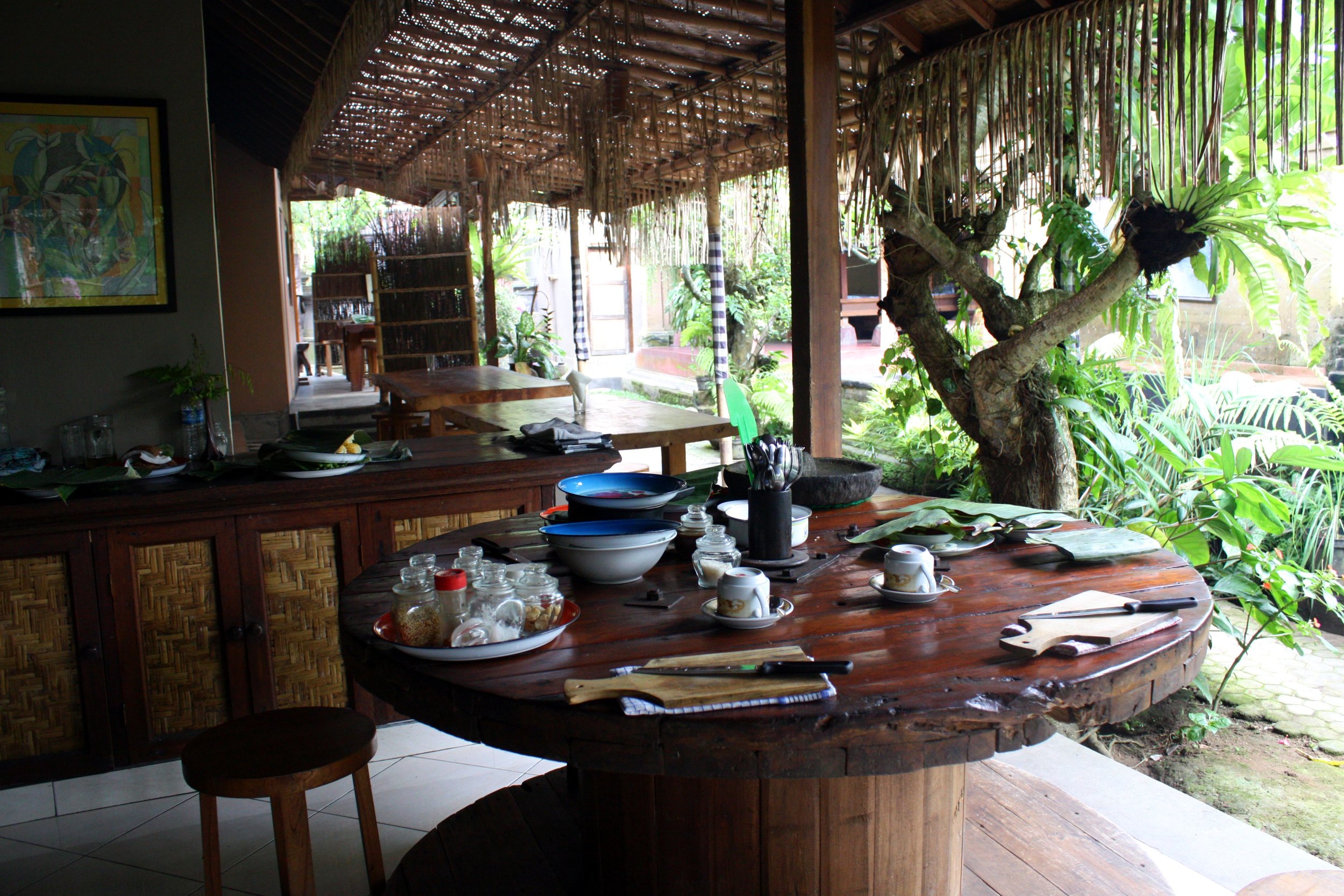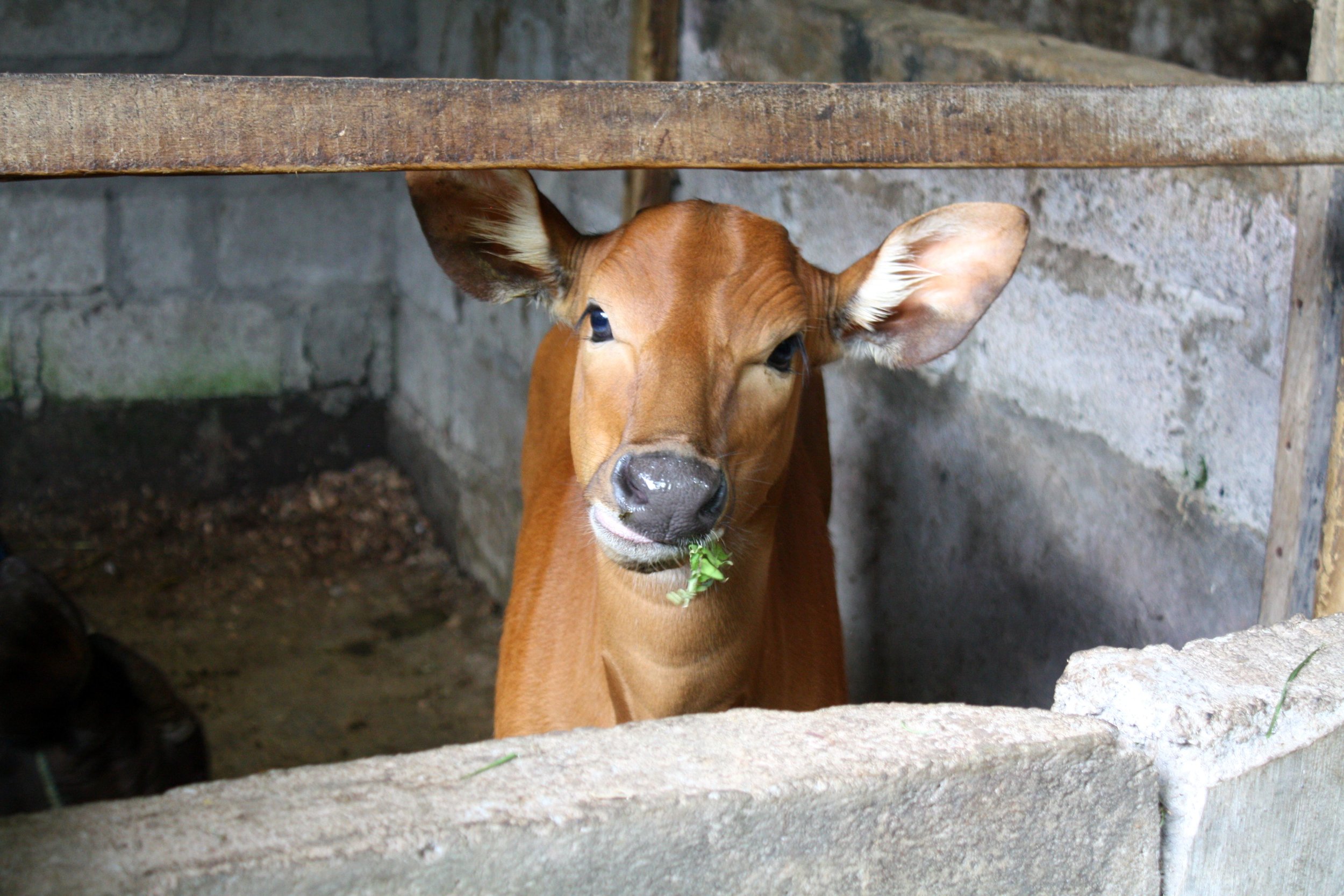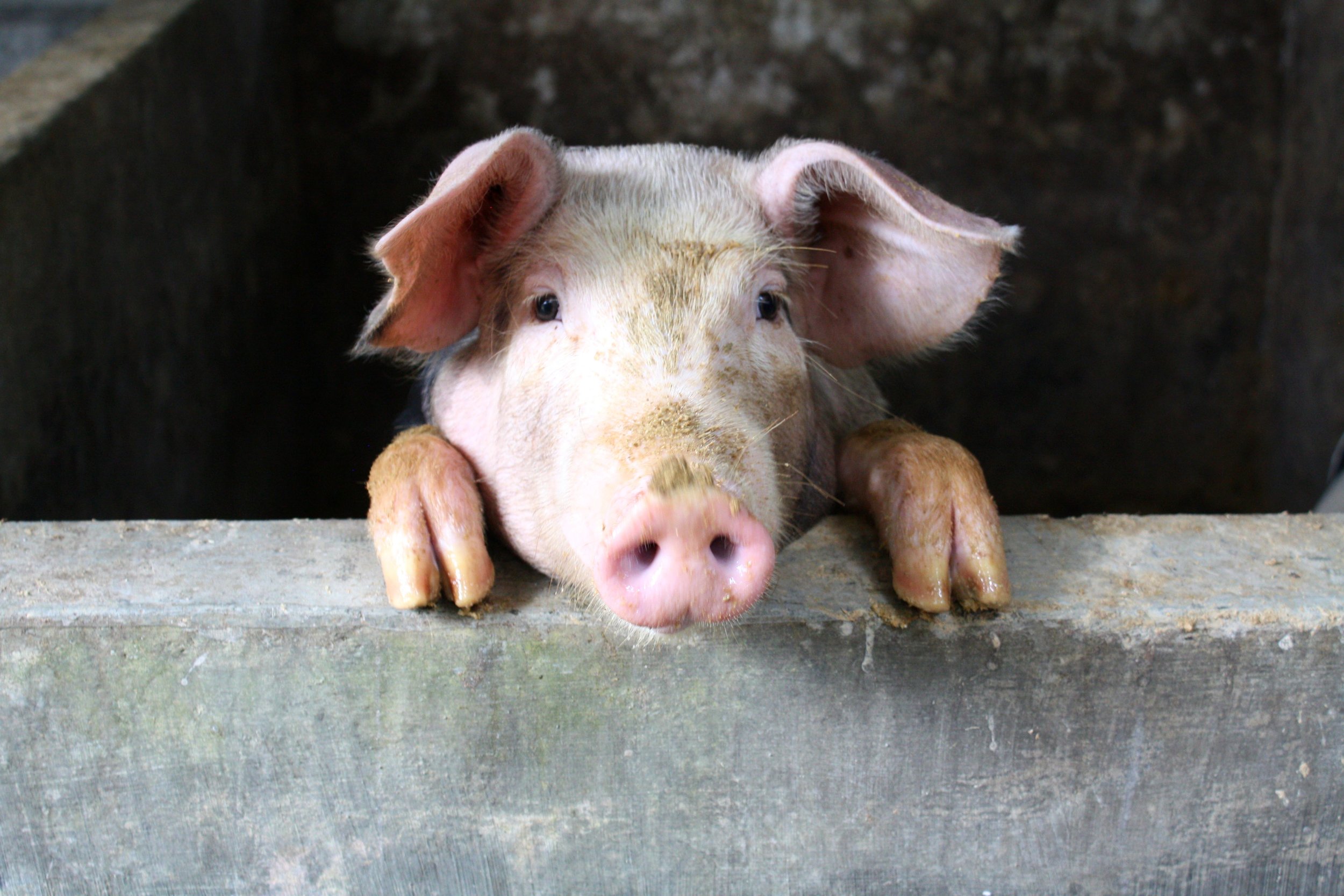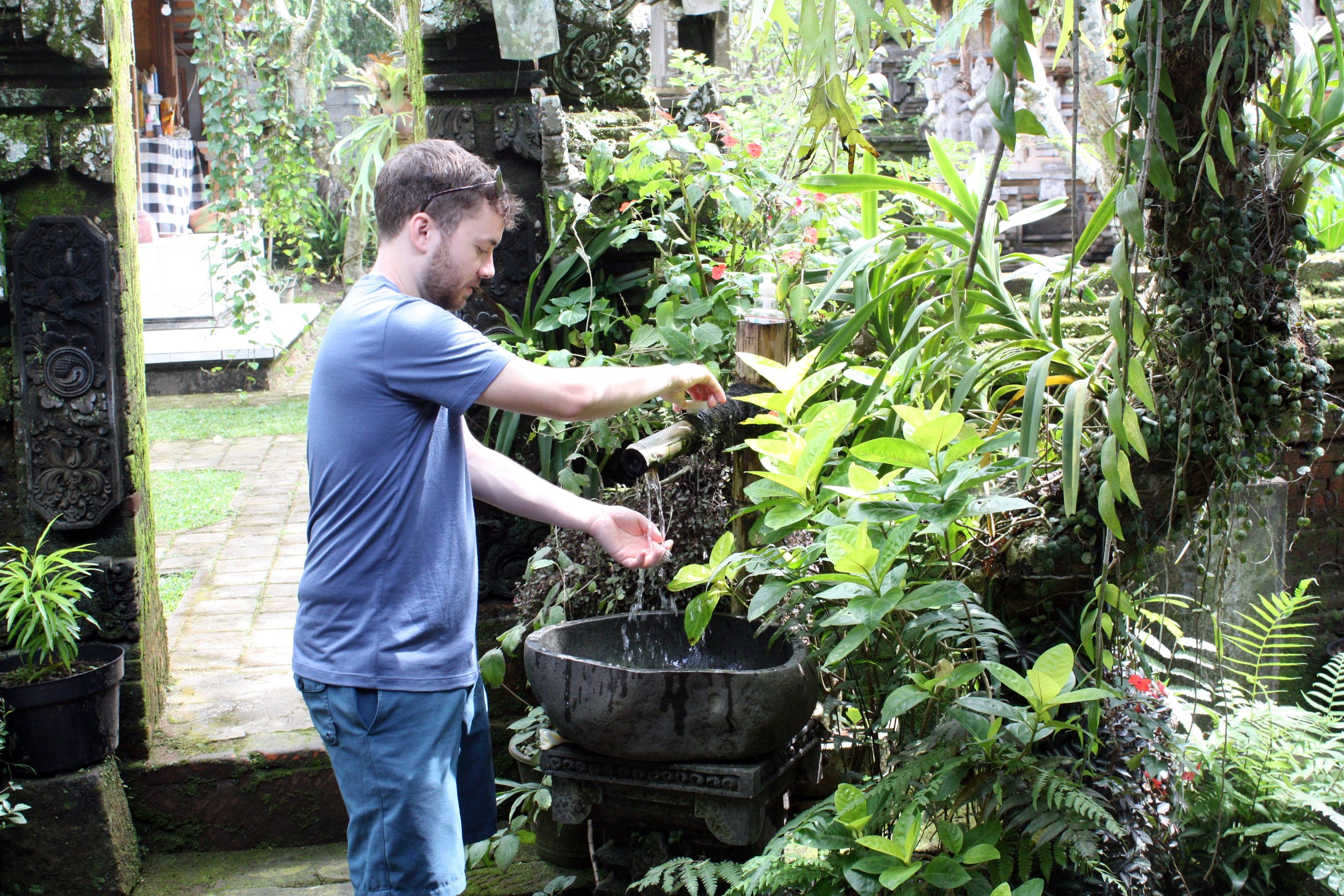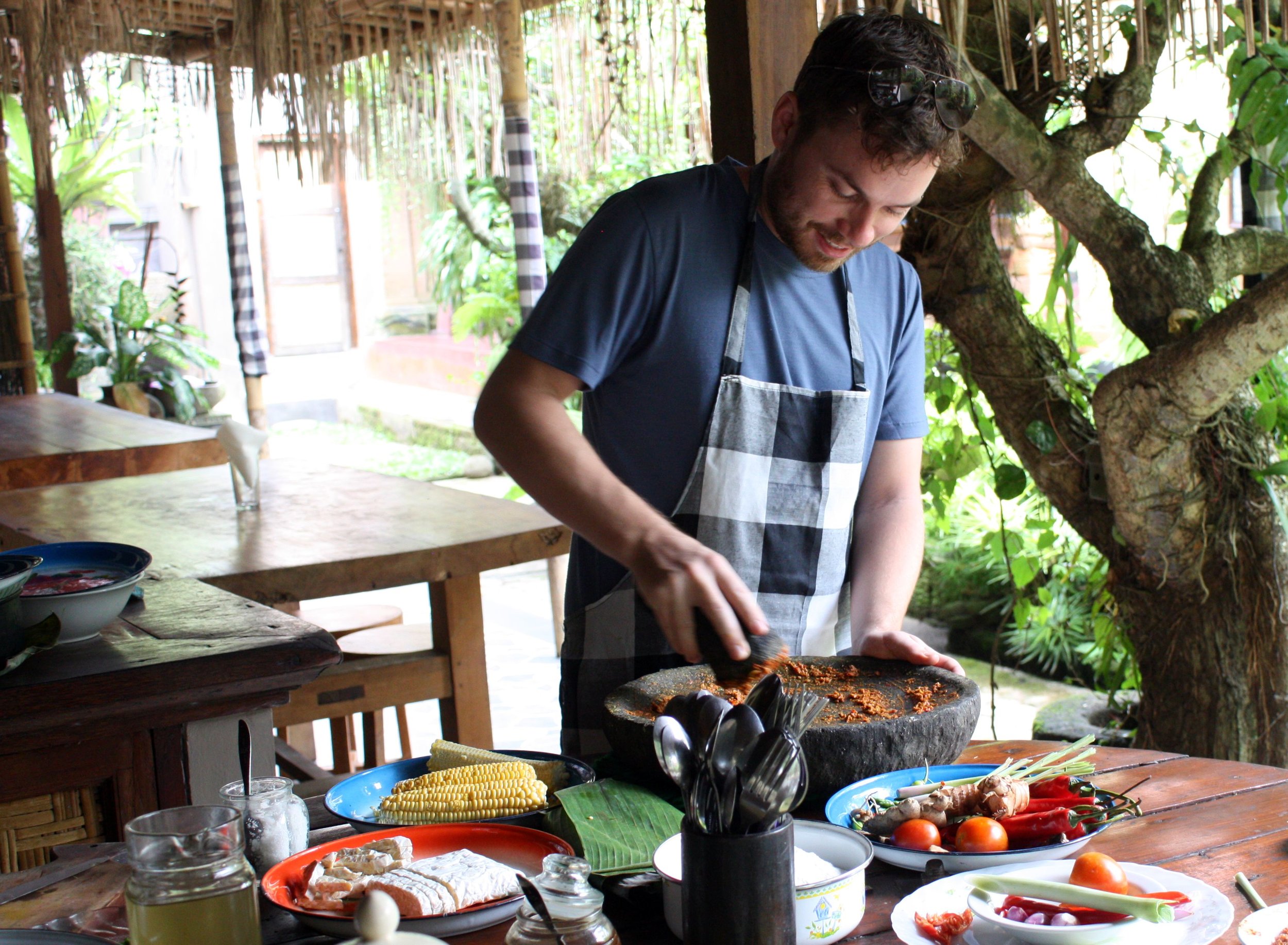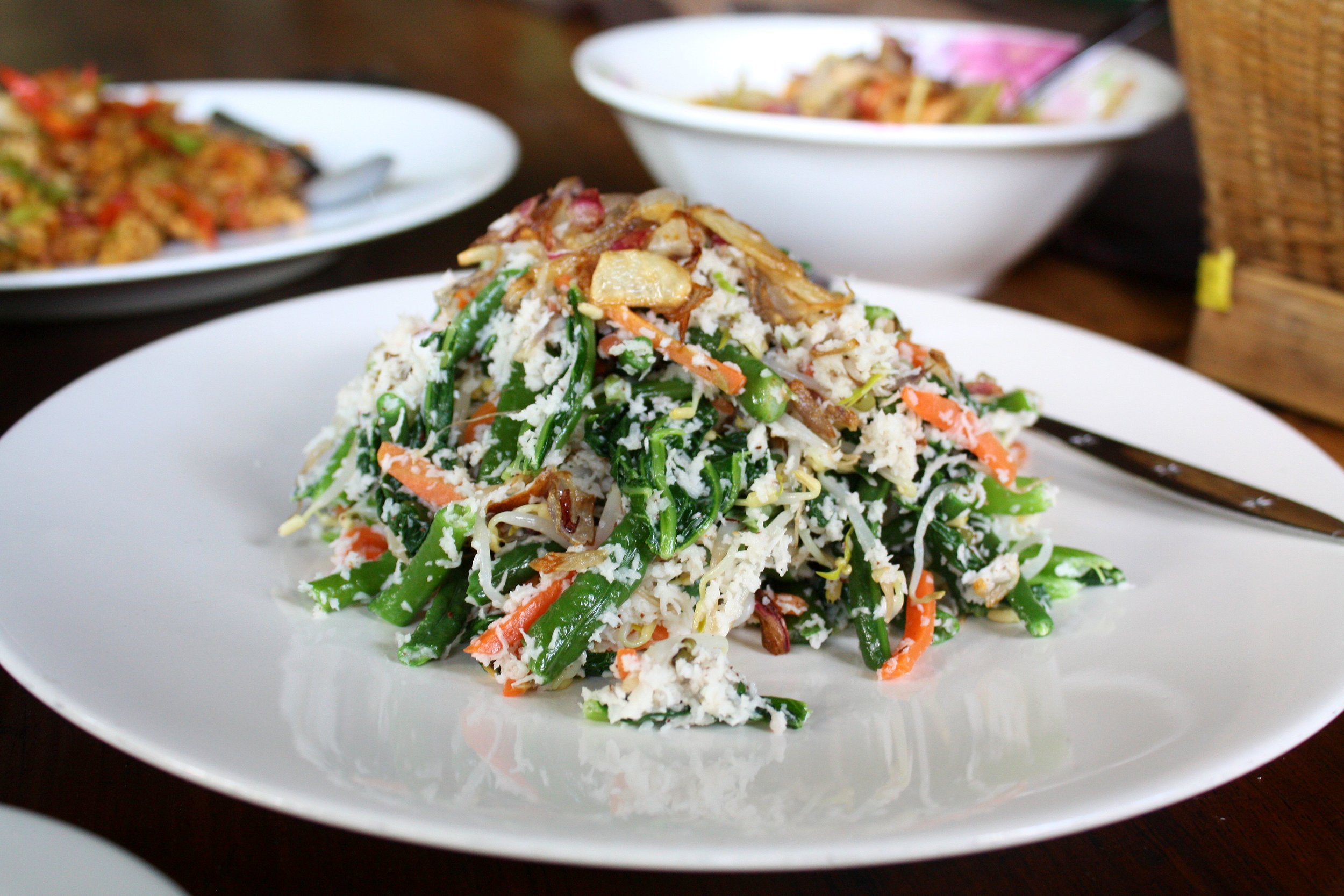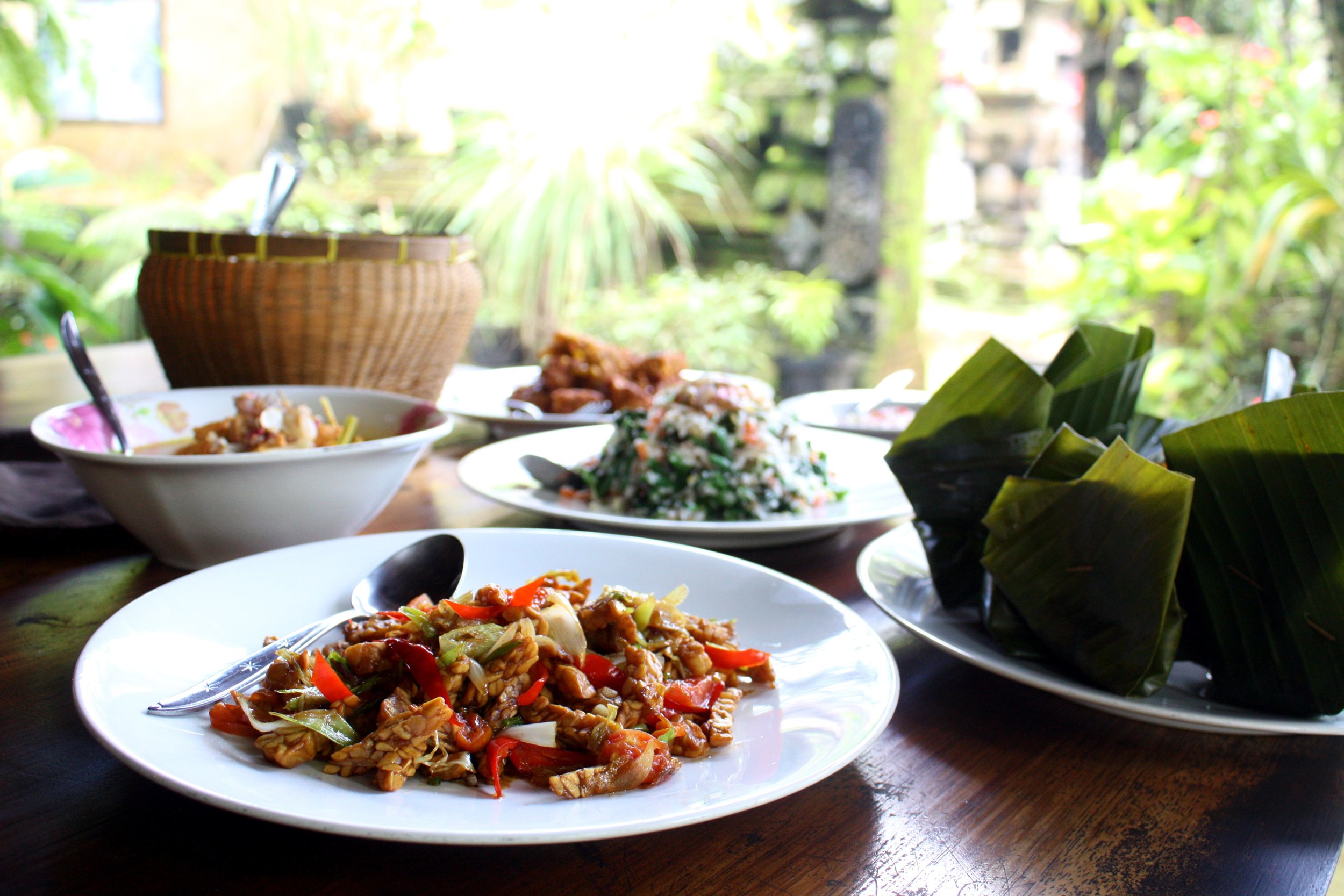Book here
Location: Outside of Ubud, Bali
Summary:
Dewa and Jero’s class is a true taste of Balinese food and culture. A short motorbike away from the cramped Ubud centre, you’ll find yourself in a lush and beautiful hideaway for a couple of hours to taste, smell and eat traditional homestyle food. This class is the perfect combination of a beautiful setting, welcoming and instructive hosts and delicious food. Don’t miss out on it if you find yourself in Ubud!
Who should attend:
Everyone.
Dishes:
Bregedel
A definite crowd pleaser, these corn fritters are jam packed with flavour and fried in coconut oil.
Bekuah
Reminiscent of a Thai curry, this dish consists of chicken simmered in a spiced coconut milk base.
Tum
This chicken dish is steamed in a triangular banana leaf package and eaten individually.
Tempe Manis
This is the first time we’ve liked Tempe. First deep fried and then sauteed with palm sugar, vegetables and aromatics.
Coconut salad
Blanched bean sprouts, carrots, choy sum (Chinese brassica), and long bean tossed with fried garlic and shallots, green chili and shredded coconut
Banana Fritter
Cooked banana battered in a rice flour pancake mix, these fritters were crunchy on the outside and melt-in-your-mouth on the inside, served with dark and syrupy palm sugar
Full Review:
We can’t say enough good things about this class - it’s exactly the kind of thing we’re constantly looking for as we travel and it got everything right, from the setting to the teacher and through to the food.
The cooking class takes place in Dewa and Jero’s home which is built in traditional Balinese style. It’s a multi-generational home with open air bedrooms and an outdoor kitchen, complete with wood burning stoves. No need for refrigeration here - all of their ingredients are growing within arm’s reach of the kitchen including: galangal, ginger, turmeric, lemongrass, kaffir lime leaves, peppercorns and more. Behind the kitchen and herb garden lies a more extensive garden, as well as a few pens for cows and pigs. It’s a very unique and special setting and we felt immediately at home.
Dewa himself was out the day we did our class, but his lovely wife Jero took great care of us. She started by showing us around the herb garden, digging up some ginger to show us how they harvest small knuckle sized pieces as they need them.
We then ground up some aromatic pastes for each dish in their heirloom mortar and pestle, which dates back 3 or 4 generations. Each recipe started with a variation on the same ingredients, but turned out completely differently. The base was made up of: chilies, an equal amount of garlic and shallot (as the balance of yin and yang is important in Balinese culture), candlenut, ginger, galangal, turmeric, and lemongrass, as well as dried whole coriander and peppercorn.
From several very similar pastes, we got something fried, something sautéed, something steamed and something stewed. The different cooking methods seemed to bring out different flavours and each dish felt completely unique from one another.
This class was likely our favourite of the entire trip. Everything combined to make the class more than the sum of its parts and we felt very lucky to be welcomed into Jero and Dewa’s home for the afternoon. Do yourself a favour and drop by their house for a class if you go to Ubud.
What we learned:
We often think of each individual Asian cuisine as insurmountable, impossible to fully understand and filled with a laundry list of ingredients, but this class made us really appreciate how oftentimes each cuisine is built on a selection of ingredients. Just as Italian cuisine builds countless dishes out of garlic, onion, tomato, olive oil, wine and basil, Indonesian cuisine uses a (relatively) small list of ingredients to great effect, transmogrifying raw ingredients into many different forms.
Everything should be fried in coconut oil.
Celiac’s have an ingrained weakness for fried things, a result of being deprived of panko-crusted this and beer battered that.
Making coconut milk at home is as simple as shredding a coconut, adding water, mixing and squeezing out the milk. The hardest part (if you live in Canada anyway) is tracking down a suitably fresh coconut.



